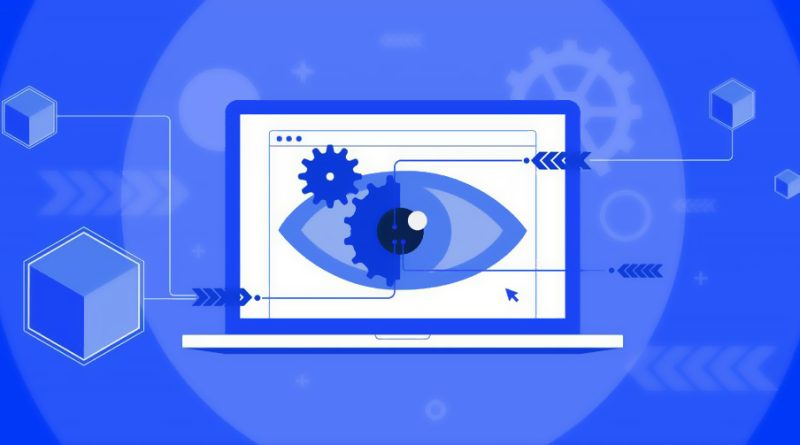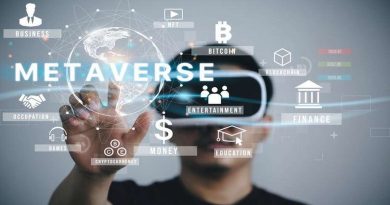How Is Computer Vision Related to Metaverse?
Computer vision is critical to human ability to experience the virtual world in the Metaverse universe. In computer vision and virtual reality, digital avatars provide an almost real-world equivalent experience.
Computer Vision in the Metaverse is a rapidly evolving new technology in the modern era. In this article, We’ll go over the significance of computer vision in the metaverse. It will aid in understanding the history, process, techniques, architecture, benefits, and drawbacks. This article also discusses the adaptation of the metaverse to life and how society will function in the metaverse. The future of metaverse technology and current research to adapt this technology are discussed in detail.
The term “metaverse” refers to a hypothetical synthetic environment that is linked to the physical world. Neal Stephenson describes a three-dimensional virtual world in which people exist as avatars and interact with software agents. Digital Twins were introduced as a digital equivalent of a physical object as well as the conceptual model underlying product lifecycle management. Second Life is a virtual world game that can be played online. In the Metaverse, humans exist as avatars in a virtual world. Before delving into the significance of computer vision in the metaverse, it is critical to understand the terminology used in this article. The three main components of metaverse technology are as follows:
Virtual Reality (VR): Virtual Reality (VR) has no connection to reality. Virtual Reality (VR) uses a computer to transport the user into a three-dimensional (3D) virtual world.
Reality Extensified (XR): Wearable devices create real and virtual spaces in Extended Reality (XR). In other words, it is also referred to as human-machine interaction.
Reality Augmented (AR): Augmented Reality (AR) is a technology that augments users’ visual fields with necessary information.
Reality Blended (MR): Mixed Reality (MR) blends the virtual and physical worlds to create new environments in which digital and physical objects interact in real-time. Mixed Reality (MR) is a hybrid of two realities that do not coexist.
In the Metaverse, Computer Vision
Computer vision is critical to the human ability to experience the virtual world in the Metaverse universe. In computer vision and virtual reality, digital avatars provide an almost real-world equivalent experience. While extended reality products can transport you to this virtual world, they are based on computer vision. In XR applications, computer vision is critical. Visual information and computer vision are critical in processing, analyzing, and comprehending visuals such as digital images or videos in order to make meaningful decisions and take action. Computer vision enables XR devices to recognize and comprehend visual data from users’ activities and physical surroundings, allowing for more reliable and accurate virtual and augmented environments. The computer vision task of obtaining spatial information about human bodies in an interactive environment is referred to as human pose tracking.
In XR applications, computer vision recreates the user environment in 3D. It determines the user’s direction and location. The body and pose of users must be tracked by the XR interactive system. Human users will be tracked by computer vision and represented as avatars in the Metaverse. Users must also perceive their surroundings in the Metaverse. As a result, image processing is an important area for improving the metaverse. The metaverse is in real-time communication with the physical environments.
In this situation, an avatar must collaborate with a physical person. In the metaverse, it is critical to display the 3D virtual world with less noise, blur, and high resolution. The interactive systems in the metaverse must still display the virtual universe in adverse visual conditions such as haze, low or high luminosity, or even rainy weather.
Computer Vision Applications in the Metaverse
Healthcare, military, real estate, manufacturing, education, and retail are examples of metaverse domains. Metaverse Health applications speed up surgical procedures, examine data from 3D scans in real-time and augmented reality, assist patients in detecting, diagnosing, and treating potential diseases, and allow patients to view their bodies. Some Metaverse military applications provide a more realistic experience by immersing soldiers in more physically and psychologically demanding war scenarios.
Real Estate Applications in the Metaverse
It enables real estate marketers to conduct virtual reality tours of the property before making any decisions for their clients. In this way, it provides customers with the benefit of inspecting under all conditions while reducing travel time to zero.
Applications for Metaverse Production
The use of virtual reality applications in factories significantly reduces the likelihood of accidents. You also don’t have to spend time and money training new employees because augmented reality simulations can prepare them quickly and safely.
Applications for Metaverse Education
Traditional teaching methods will never be as effective as using concepts visually. Students would rather watch than read. As a result, using virtual reality to teach a subject with visual dimensions will always result in better learning outcomes.
Retail Applications in the Metaverse
Metaverse (formerly Facebook) plans to launch direct-to-consumer virtual stores using virtual reality and augmented reality, which is one of the most significant recent developments. This encouraging news also helps to chart different paths in the Metaverse.
Techniques of Computer Vision
Image Categorization
Image classification is the process of applying specific rules to pixel and vector groups in an image. It is one of the most well-known techniques. However, it faces a number of challenges in its implementation. Assume we have a set of images that belong to a category and have created a test image set to assess the accuracy of our predictions. The difficulties here include changing perspectives, deformation, and light settings, to name a few.
Detection of Objects
Object detection is a technique for identifying and locating specific objects in images or videos. Object detection determines the positions or movements of objects in the scene and draws them with a bounding box. The primary distinction between object detection and image recognition is that object detection defines and labels a bounding box for each object in an image or video that has been identified as a specific object. The model predicts the label and location of the object.
Object Recognition
Object tracking is defined as following a moving object across multiple scenes. Object detection is used first, followed by deep learning applications that monitor the object’s movement. Objects that have been tracked have an indicator next to them.
In the Metaverse, the Future of Computer Vision
Metaverse appears to be an important part of our lives in the future. As a result, numerous investments are made. While the business world is attempting to adapt quickly, many sectors are expected to take place in the Metaverse in the future. Extended reality (XR) and augmented reality (AR) technology products will develop or new products will emerge in the future, according to computer vision.
Metaverse Blockchain
Blockchain technology is the original name for the design that underpins the operation of the digital currency Bitcoin. In his whitepaper, Bitcoin’s creator never used the term “blockchain.” A software design based on existing technologies enables to the creation of a “purely peer-to-peer version of electronic cash.” Metaverse contains a few projects. Metaverse also intends to establish a digital economy. It is supported by cryptocurrencies. The following are the benefits of Blockchain in the Metaverse: digital proof of ownership, digital collectability, value transfer, governance, accessibility, and interoperability. It also provides a clear and cost-effective solution.
Artificial Intelligence in Metaverse
Deep learning features provide better performance for developers and designers in Metaverse than traditional approaches. However, implementing artificial intelligence to make users’ jobs easier and provide a high-performance experience is insufficient. Existing AI models are frequently intensive and necessitate large computations. As a result, it is critical to creating artificial intelligence models that are lightweight and efficient.
The Metaverse’s Architecture
The Metaverse is still in its early stages of development. As a result, there is no single definition of architecture. From bottom to top, Jon Radoff proposed a seven-layered architecture. Infrastructure, human interface, decentralization, spatial computing, creator economy, discovery, and experience are examples of these. The industrial division is represented by this architecture. The Metaverse architecture, on the other hand, should be viewed from a micro perspective. Infrastructure, interaction, and ecosystem are examples of these. The Metaverse’s fundamental requirements necessitate the transformation of architecture from a physical to a virtual world.
Conclusion
To summarize, the Metaverse is an important and promising topic today. The Metaverse approach is expected to focus on how this technology will be applied to people’s lives rather than how this technology will be developed in the future. As a result, this technology is currently in need of additional research and development. Computer vision, augmented reality, and extended reality technologies must be developed in order to make a faster and more positive contribution to Metaverse. Companies must invest more in this area, and technologies must emerge faster and more advanced. Leading companies in the business world, in particular, should participate in Metaverse and set an example in this regard.
The rapid acquisition and realization of this vision are critical to our future. Furthermore, these technologies must be more widely available in society. This technology, which will soon become an integral part of our lives, should be appropriate for people at all economic levels of the organization. Instead of high-priced products, low-cost products should be developed and made accessible to all people.



